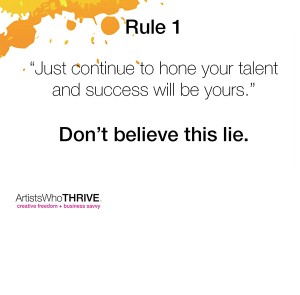I had a phone consult with an artist.
Then she sent me an email with some good news, see below.
Rather than just reply, I decided to have a chat with her and let you to listen-in.
Hello, Ann.
Just thought I’d drop you a note.
I’ve done a lot of thinking and writing since our call, and one of the things that I took the most away from was you telling me that “it’s not about you, it’s about them.”
I started doing custom bridal bouquet paintings, launched it as a product on my website and immediately sold two custom paintings last night upon launching.
People are very excited to have this preserved as a memory for them.
One of the things that stopped me initially was that I don’t paint at all realistically… but it turns out that my customer doesn’t want a photo realistic painting of their memories.
They want the magical treasured memory.
So, I’m popping their language into all I do.
I’ve also emailed several customers and talked to a lot of people about my art (haven’t had time for the excel spreadsheet yet), and the one consistent word they use is “happy”.
At any rate, I really appreciated your time, and the results I think are going to be amazing.
Much more work to do, but I know where I’m going at the very least.
Best regards,
Bari
Bari J. Designs
About Ann Rea
Ann Rea is a San Francisco based Artist and Entrepreneur. Her inspired business approach to selling her paintings have been featured on HGTV and the Good Life Project, in Fortune, and The Wine Enthusiast magazines, profiled in the book Career Renegade. Rea’s artistic talent is commended by American art icon, Wayne Thiebaud, and she has a growing list of collectors across North America and Europe.









